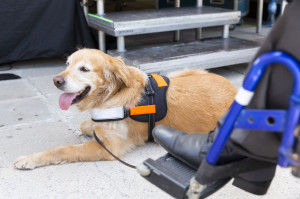 At the beginning of this year, the United States Department of Housing and Urban Development (HUD) made some much-needed changes to their guidance for assistance animals. This was an area that caused a lot of confusion in the previous 2013 HUD guidelines. Many housing providers were unhappy with the original guidelines as many things were not clearly stated.
At the beginning of this year, the United States Department of Housing and Urban Development (HUD) made some much-needed changes to their guidance for assistance animals. This was an area that caused a lot of confusion in the previous 2013 HUD guidelines. Many housing providers were unhappy with the original guidelines as many things were not clearly stated.
Thankfully, the new guidelines clear up a lot of the confusion. One thing that’s addressed in the new guidelines is what assistance animals are. There are two types of assistance animals: service animals and support animals. The term service animal refers to trained dogs that help people with mental or physical disabilities. These dogs are trained to do certain jobs in order to assist the person with a disability. Support animals, on the other hand, do not necessarily have to be trained. They can be trained or untrained. Additionally, the term support animal doesn’t refer to just to dogs. Animals that could be considered support animals include regular household pets, such as cats, dogs, rabbits, hamsters (or other common small household rodents), fish, turtles and small birds. Other animals, such as barnyard animals would be considered a unique case.
Service animals do not require documentation. However, owners of support animals may need to provide more information. When the support animal is assisting with a disability that may not be easy to see, then you may ask the tenant to provide additional proof of need.
While there are some websites that provide letters stating that the person is entitled to the support animals, many of these sources provide letters only based on answering a couple of questions and the requester making a payment for the certificate. There’s a question of how legitimate these letters are. So, the housing provider can ask for information from a health care provider like a tenant’s primary care physician.
The new guidelines also help tenants understand what type of information they should request from their medical provider. This can help reduce any back and forth that could happen as a result of not receiving the needed documentation. A housing provider can use the Animal Assistance Notice (AAN) to provide this information to a requester.
These new guidelines have helped clear a lot of things up for housing providers going forward in regards to assistance animals. This blog only covers a piece of the notice. You can visit HUD to learn more in regards to guidelines associated with assistance animals or check out Pet Screening’s blog on the “analysis of HUD’s new assistance animal notice.”








